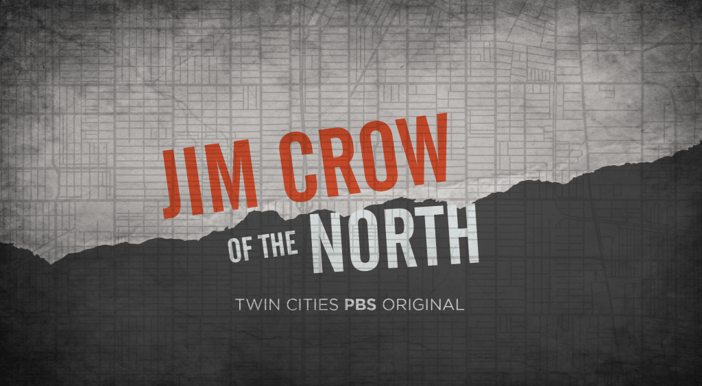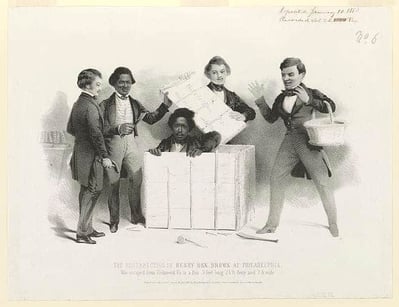At Airship, we want diversity and inclusion to be an ongoing interactive experience throughout the year. As February is Black History month we asked this question of our crew.
"How do you and your families honor Black History Month?"
Kathleen Robinson, Director of People Operations
Over the past few weeks, a variety of ideas and activities have been posted in our #dei slack channel that we’d like to share with you. We hope you find an experience, an article, or a quote that enhances your understanding and encourages your continued exploration and education throughout the year. You can read more about how we view dei here.
Documentaries and Discussion - Tremain-Ajena Jones, Inspector
Our family watches documentaries. And, in February, we focus on movies and documentaries more on black history. Recently, my mother and I watched the PBS documentary titled Jim Crow of the North that speaks on racial division through housing and district rezoning. It's one of those documentaries that emphasizes that prejudice can be seen in many forms and that it does not only exist in the South.
My family is originally from Detroit, Michigan, and moved here to Birmingham, Alabama a few years ago. It is interesting to me that when we were in Michigan everyone talked about how bad the South was in terms of prejudice. But, in my experience, there is prejudice and racism everywhere not just in the South. This documentary shows through the US housing situation how racism is perpetuated.

But, here’s the important part of watching these documentaries, conversation and discussion. My mom has always been into history so whenever there was a documentary on tv we would watch it. My mom would stop during the movie and start having a discussion. I never thought about it till I was older but now I realize those conversations we had back then have given me an insight and a way to discuss things without having to be an expert or have an opinion but just to have information and facts.
Other documentaries we're planning on watching include Enslaved which follows Samuel L. Jackson, his wife, and a team of archeologists as they retrace the Transatlantic Slave Trade through finds in underwater archaeology.
In the past we’ve watched:
*4 Little Girls directed by Spike Lee
*I Am Not Your Negro
*Unchained Memories: Readings from the Slave Narratives (The accompanying book is also a very informative read)
Museum and Memorial - Kathleen Robinson, Director of People Operations
In Montgomery, Alabama is the National Memorial for Peace and Justice which is a national museum that recognizes the racial terror and lynching that occurred between 1877 and 1950 in the South. Our Director of People Operations, Kathleen Robinson, and her husband Daniel spend a day exploring this moving, powerful site. Her reflections and pictures are below.
When you enter the Memorial, you start at ground level. Even with the monuments that symbolize the thousands of victims of racial terror lynchings. My assumption before entering was that each monument represented one person. The truth… each monument represents a county where numerous lynchings took place. Their names are engraved with the date, too many Unknowns to count. The number is more than the monuments, the number is more than the names, the number is unknown, unimaginable.
As you round each corner of the square Memorial, your path goes deeper as the monuments' positions stay the same. I went lower as they raised above me. Until I was forced to look up from underground level, up to the monuments, up to their names, up to the light trying to find its way through.

My ears filled with the sound of the peaceful waterfall. I couldn't dare let myself imagine what the true sounds were in those counties that each of the monuments represents. My heart was beating, but barely.
At the end of the square Memorial path, you have traveled down, farther into the Earth, but then you are released out into the sunshine, onto green grass, out to freedom. My path was so simple, so easy. The path of those surrounding me is so much the opposite.
I cannot change the past. I can only speak up in the present and push forward to the future. I can educate myself and find more ways to create safe spaces for all throughout my life. I can try to make Black History Month go further than February.
Learn the details - Lisa Schuck, Director of Marketing
The devil is in the details they say. And it is the details, the individual-specific stories not the general facts of segregation and racism in history that are for the most part unknown to me. It was with excitement that I supported and signed up for 28 days of black history, published by the Anti-Racism Daily to learn some of those details. Each day, I receive an email with an aspect of black history that educates, gives reflection questions for discussion, and then links for additional learning on that day’s subject matter.
One of the most fascinating days was that of Henry Box Brown.
Henry Box Brown devised a plan along with the Underground Railroad to ship himself north in a shipping box that was just 3 feet long, 2 1/2 feet deep, and 2 feet wide (Library of Congress). He spent 27 hours inside the box and traveled over 300 miles north to Philadephia via wagon, ferry, and railway. No one along the way knew he was in the box.

Henry Brown could have faded away and lived into his new life as a free man. Instead, he used his story to educate others and to lobby for the abolition of slavery across the United States and Europe. He even made “box” his middle name as a reminder and a testament to what he experienced. He wrote his story in a book, “Narrative of the Life of Henry Box Brown.” And, to me one of the most interesting pieces of his life was that he used the box in which he was shipped to perform magic shows disappearing and reappearing along with other magic tricks using the performing arts to educate and encourage action.
The powerful piece of this is the reflection question of listening to those who are directly impacted by systemic issues and contrasting that to the experiences of those in power. That, in and of itself is powerful. A reminder to gather information and process, ask questions, learn and take action. Because it is by knowing the facts that one can understand the devil in the details.
Blog post - Kevin Daniel, Builder
After the suicide of Miss USA 2019 Chelsie Kryst, Kevin Daniel dropped this blog post entitled, "Black Women, It is Okay to Let Go of Your Cape." It struck a chord for many. The heavyweight that Miss Kryst felt, the burden that so many black women feel to be strong and resilient. The message is that it is ok to take off your cape, to rest, and to not be okay.
Each of these activities - movies, blogs, emails, museums is educational and asks for us to reflect upon history so we can better learn to live into the future. We hope that these individual activities of learning from our crew encourage you to find new stories, activities, and experiences that spur you to reflect, discuss with others, and grow not just in February but throughout the year.


